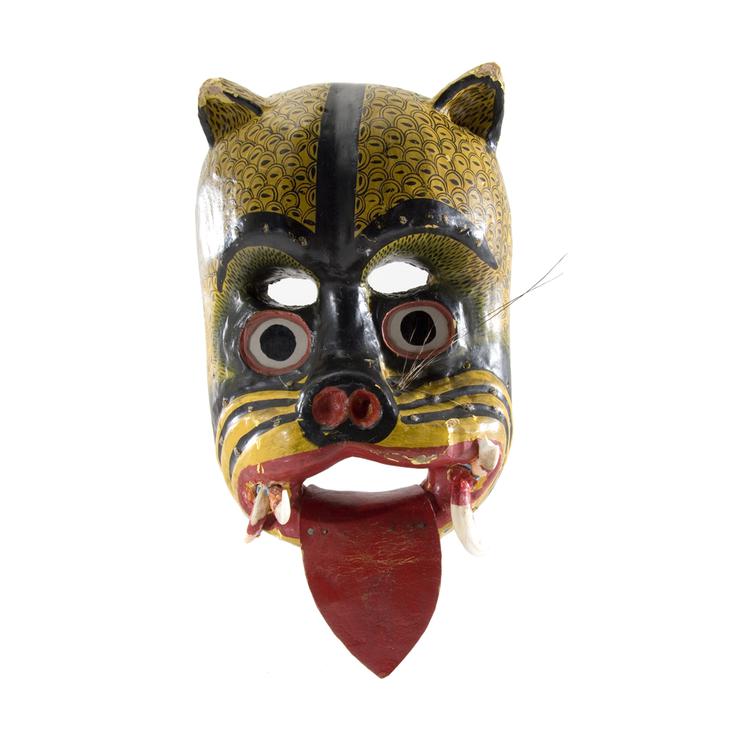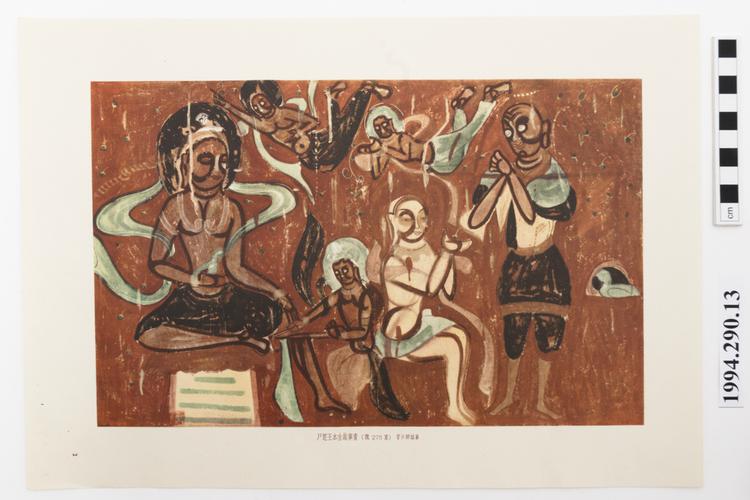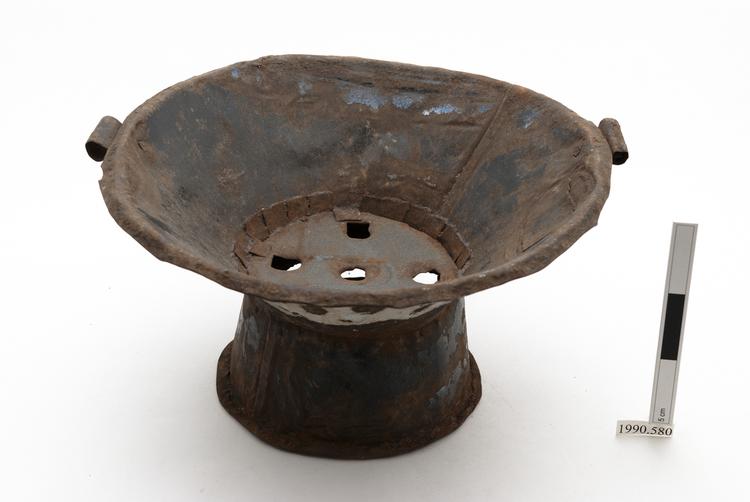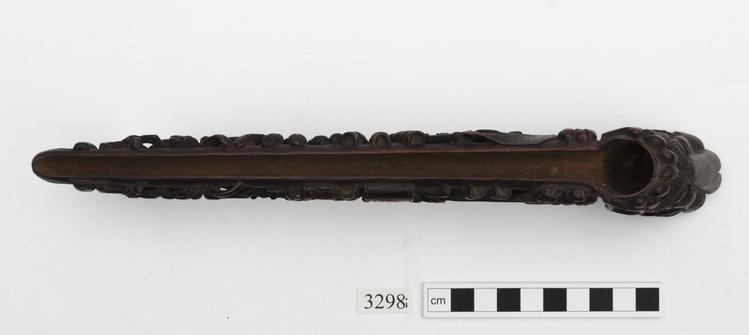
Carved, polychrome wooden face mask of "El Tigre". Leather tongue, tusks, quill whiskers and glass or plastic eyes.
These wooden masks from Guerro are used in the Tiger Dance - a dramatisation of a hunt for the tiger. The masks are painted yellow & black, and often incorporate feathers, tusks, fur and other natural items. Masked dancers also wear matching costumes. There are several other masked characters in the drama - the workers, the boss, a doctor, deer, hawks and comic figures. A dance master plays the drum and flute. Worn by dancers acting as Jaguar characters in traditional annual dances in Mexico to mark religious feast days or to ensure fertility of new crops.
How is it used?
Tigre masks with a cotton painted costume are worn as part of a dance festival called the dance of the Tigre. The Tigre dancers usually wear the mask high on the head and look through the open mouth. Other characters in the dance are the boss, the workers carrying ropes to tie up the Tigre, a doctor, hawks, buzzards and dogs. These masked characters tell a story about a wild animal who lives in the mountains near a village. The Tigre comes down from the mountains and threatens the villagers and their animals. The villagers gather together to catch and kill the Tigre to stop it harming the people.
Who is it used by and why them?
The Tigre dancers are usually men and some of the dances are very physical involving pretend violence or whipping.
Today's Mexico is a fusion of Aztec and Spanish culture which came about as a result of the Spanish conquest of Mexico by Hernan Cortes in 1521. Many of the dances and masquerades have pre-colonial origins and refer to old gods such as Tlaloc, the rain god sometimes symbolised by the Jaguar(Tigre) The Tigre dance is performed throughout Mexico, but especially amongst indigenous groups in Guerrero, Oaxaca, Michoacan, and Morelos states.
The Tiger Dance has its origins as a cultivation rite as it is dedicated to the Tepeyollotli, the ancient jaguar god of the land. In addition to the mask, the Tigre also wears a cotton costume painted to resemble a wild cat. The dance begins with the entranced of the Master and 24 Tlacololeros, or helpers. (Tlacolol means to prepare the land). The dance centres around the pursuit, capture and death of the Tigre. There are many comic incidents, the first of which is the confusion caused by the misunderstanding of the Master’s instructions as some of the helpers are deaf. The dance includes many masked characters; the master, the helpers, a doctor, a man dressed as a woman, a dog, a deer, buzzards. The characters may vary a little from one area to another. The performance is accompanied by a drum and a flute. The final sequence is the skinning of the Tigre and the sale of the skin. This includes a frenetic dance where the participants beat each other with heavy whips. This section has religious origins as it was common practice for penitents to bear pain.
Sometimes teams from different communities come together and their Tigre's fight in competitive battles. Their Tigre masks are often made of leather and worn over the head to protect the wearer from injury. The dance can get quite violent sometimes with people hitting each other with pieces of knotted rope. The leather may be painted green or yellow, depending on which town or community the dancers come from.
The performance is very well attended by the local community and draws loud crowds of spectators. In tourist areas it has become a popular attraction.


































































































































































































































































































































































































































































































































